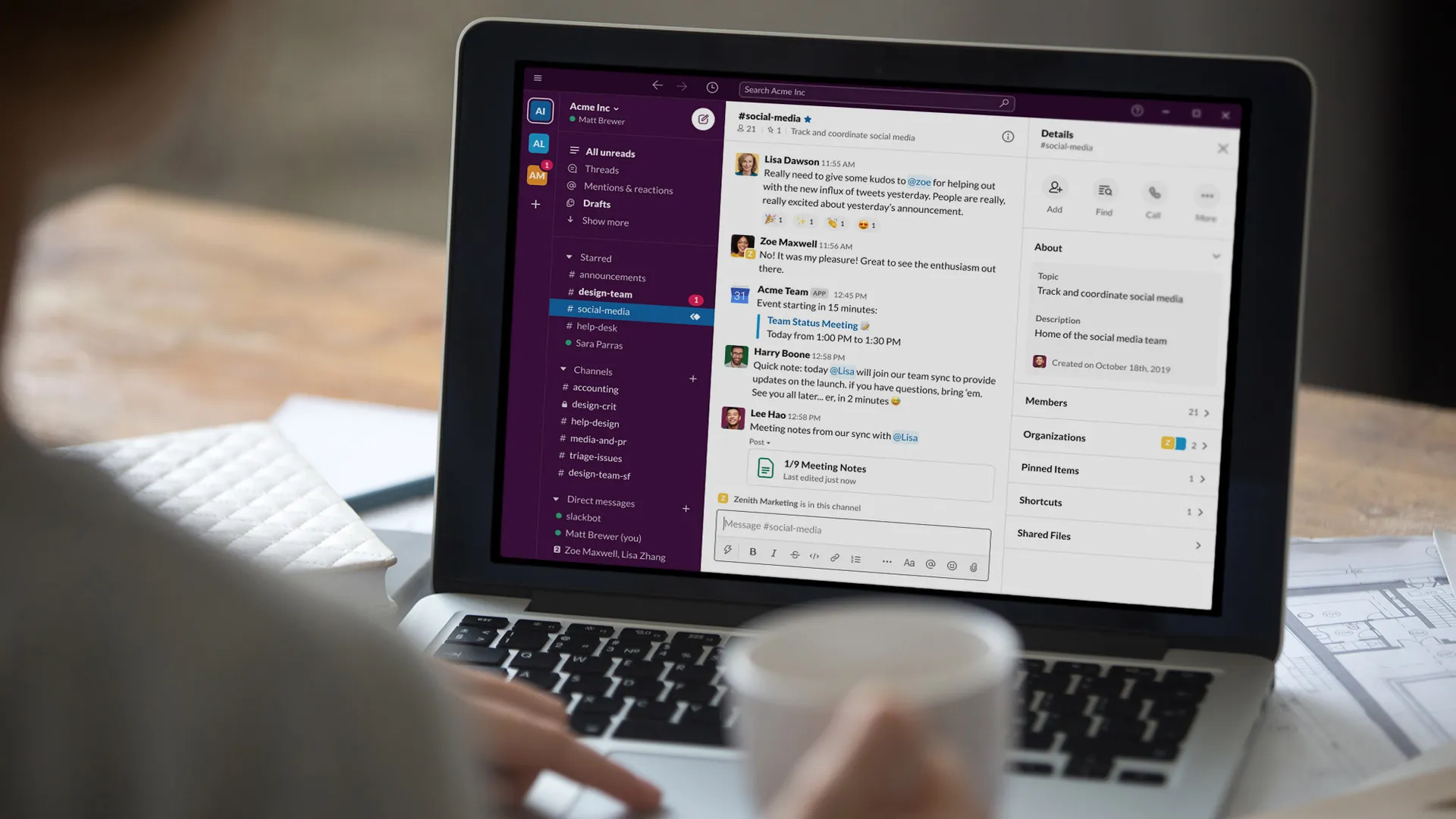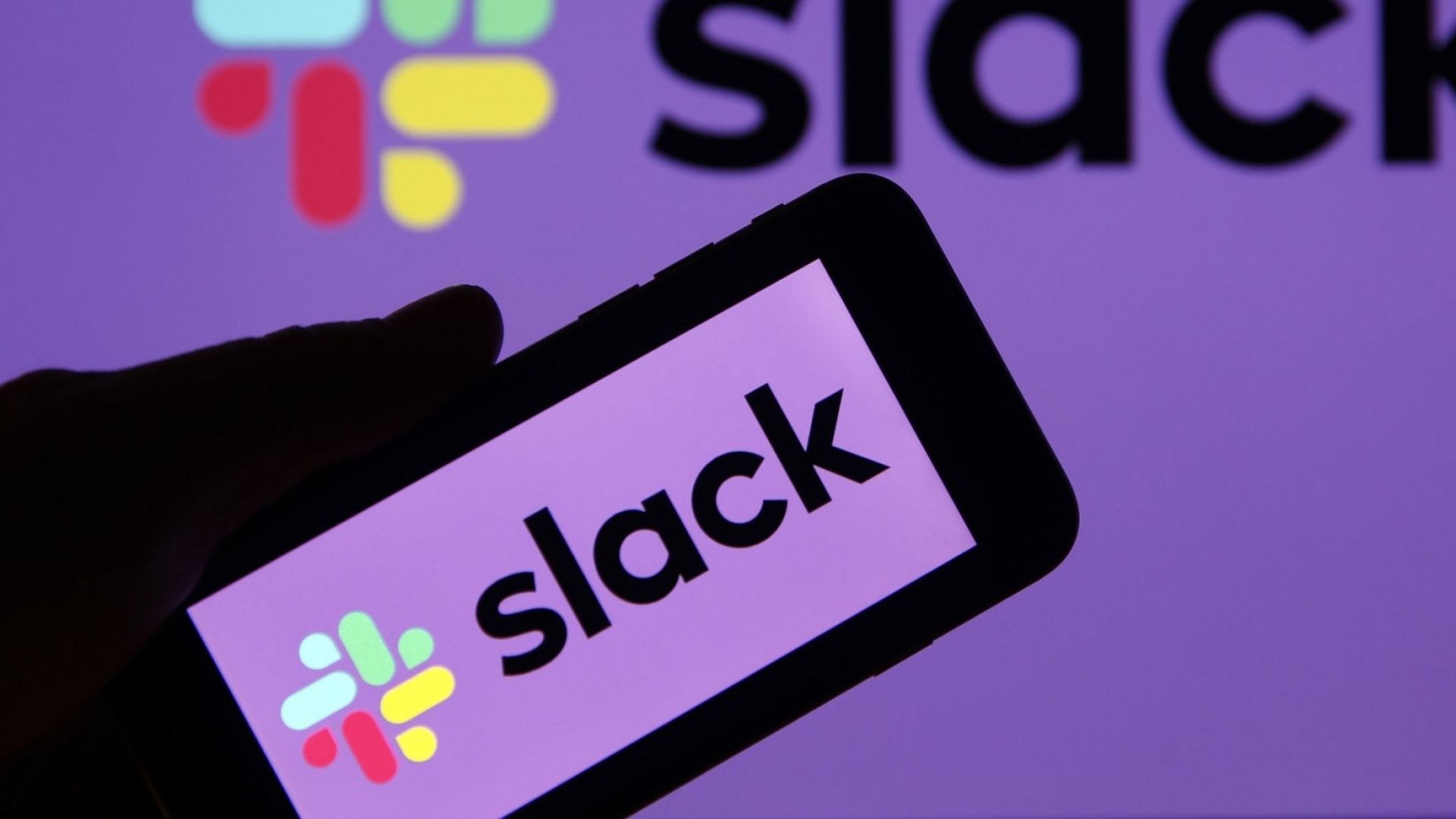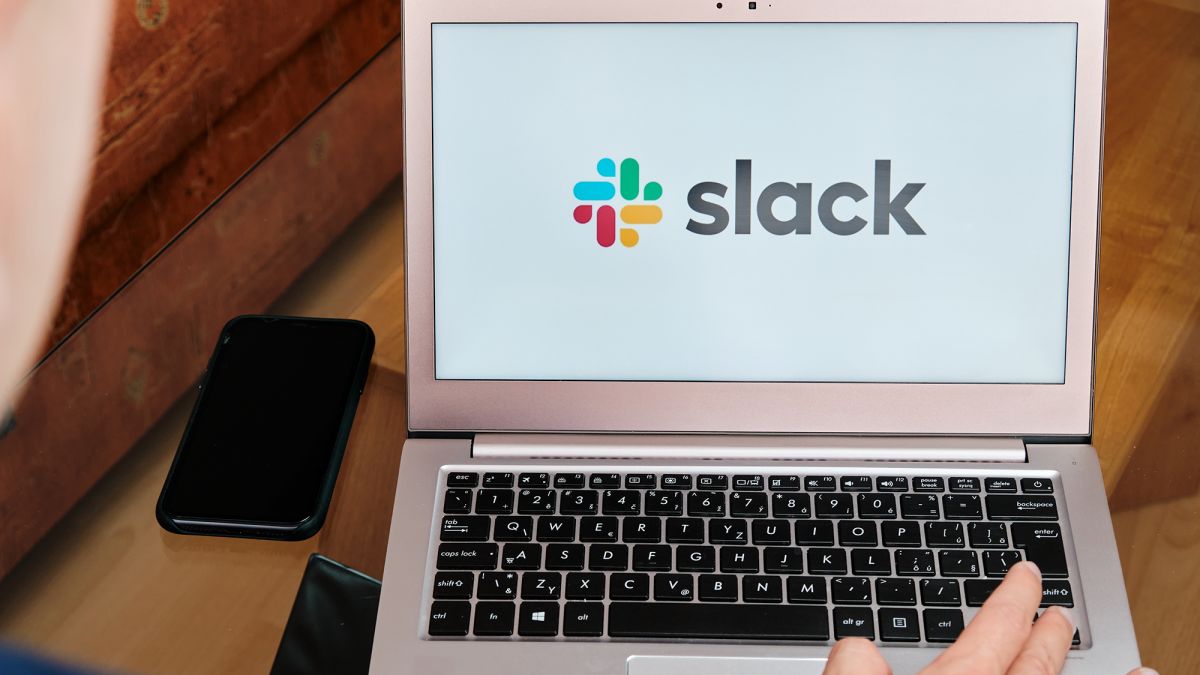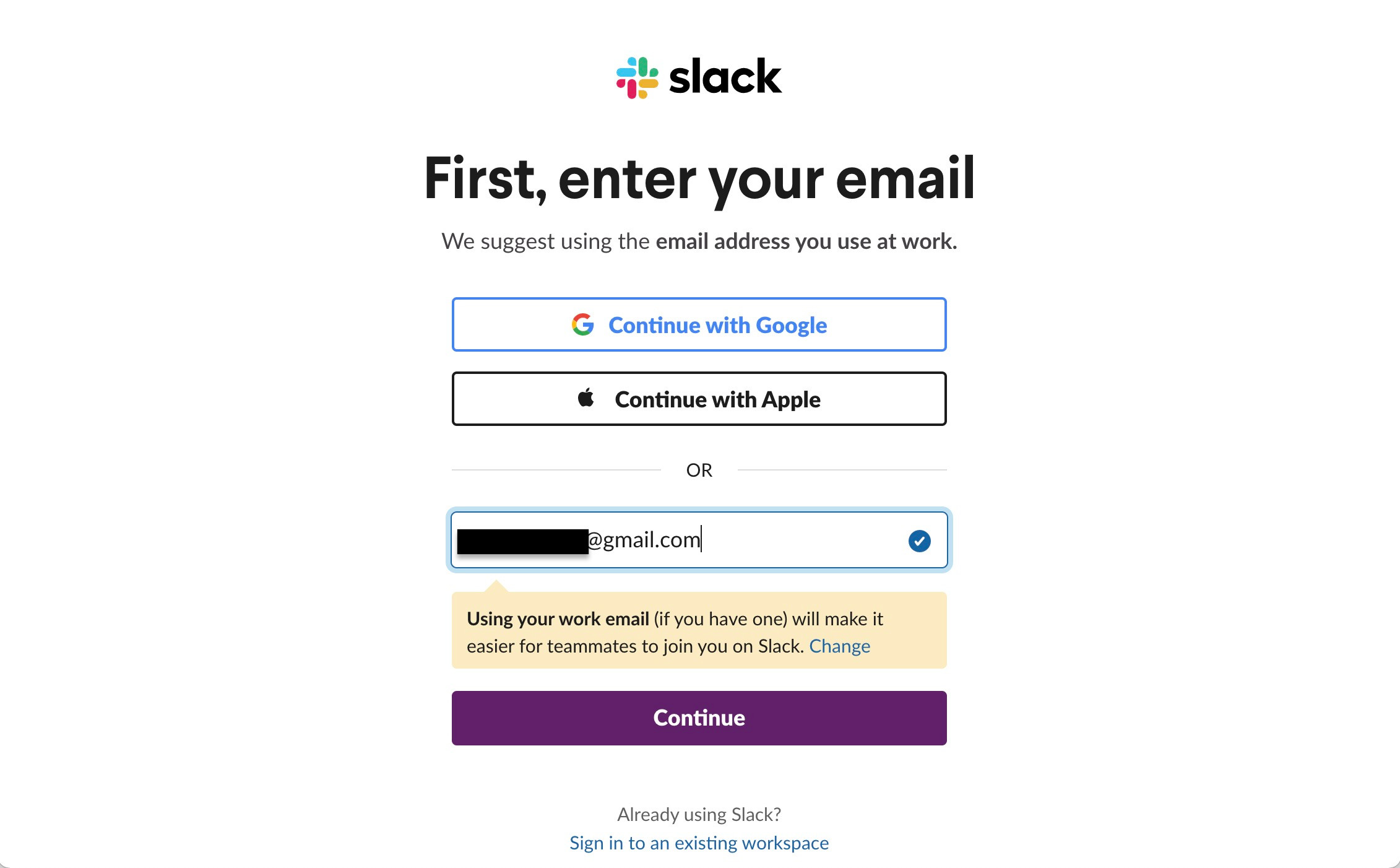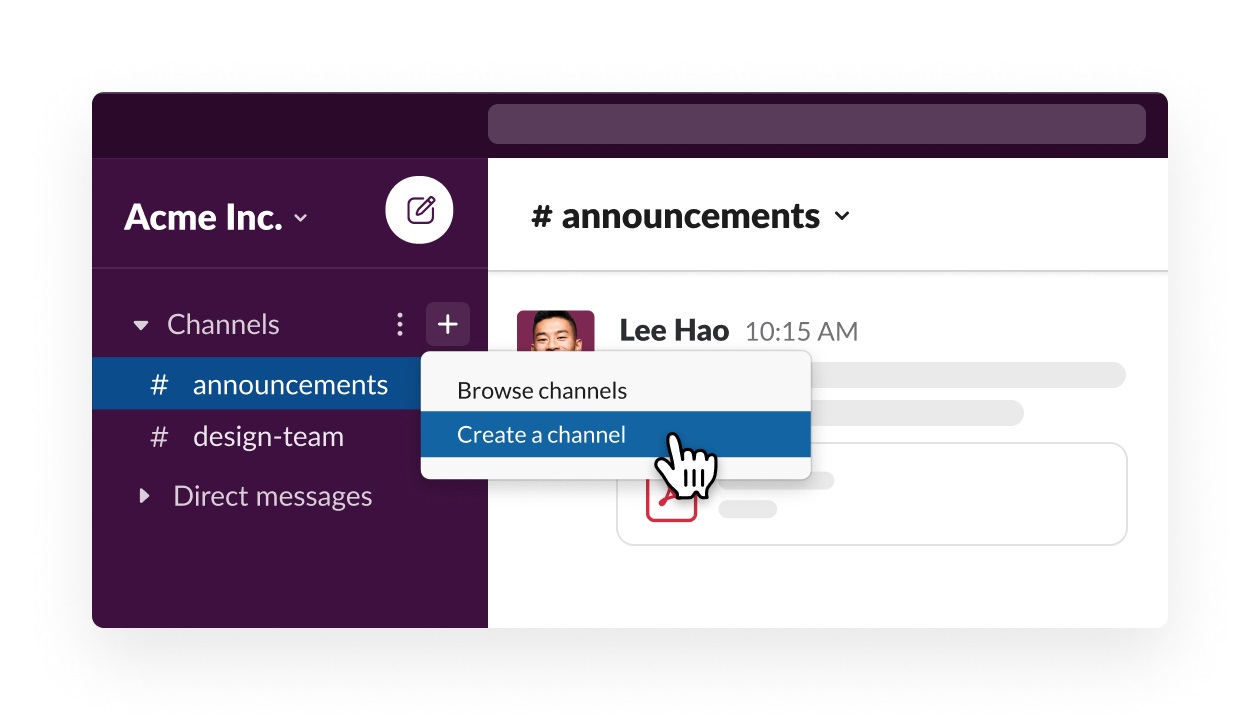Introduction
Welcome to Slack, the leading communication and collaboration platform that revolutionizes the way teams connect and work together. One of the key features of Slack is its channels, which allow users to organize conversations and share information with specific groups of people.
In this article, we will guide you through the process of joining a channel on Slack. Whether you’re new to Slack or just looking to expand your network, joining a channel can open the door to new opportunities for collaboration, knowledge sharing, and building relationships with like-minded individuals.
Slack channels are virtual spaces dedicated to specific topics, projects, or teams. They serve as a hub for discussions, file sharing, and keeping everyone on the same page. By joining a channel, you gain access to a community of individuals who share a common interest or are working toward a shared goal.
With thousands of channels available on Slack, you have the flexibility to explore a wide range of topics and find communities that align with your personal or professional interests. Whether you’re interested in joining a channel related to design, marketing, software development, or even hobbies like photography or gaming, there’s a channel for you.
Joining a channel on Slack allows you to connect with people who have similar interests, ask questions, and learn from others’ experiences. It’s a fantastic way to expand your network and tap into the collective knowledge of a group. By engaging in discussions and sharing valuable insights within the channel, you not only contribute to the community but also enhance your own skills and expertise.
In the following sections, we’ll walk you through the process of finding and joining both public and private channels on Slack. Whether you’re looking to join a popular channel with a large community or a more focused channel for a specific team or project, we’ve got you covered.
Why join a channel on Slack?
Joining a channel on Slack offers numerous benefits that contribute to a more enhanced and productive collaborative experience. Here are some compelling reasons why you should consider joining a channel:
- Expand your network: By joining a channel, you have the opportunity to connect with individuals who share a common interest or work in a similar industry. This allows you to expand your professional network, making it easier to collaborate, seek advice, and share knowledge.
- Stay informed: Channels on Slack are a treasure trove of information. By joining relevant channels, you can stay updated on the latest industry trends, news, and best practices. It’s a great way to keep your finger on the pulse and continuously grow your knowledge base.
- Collaborate with like-minded individuals: Channels are tailor-made for collaboration. They provide a space where you can engage in discussions, share ideas, and work together on projects. By joining a channel, you can tap into the collective intelligence and expertise of the community to solve problems and make progress.
- Gain exposure and visibility: By actively participating in channel conversations, you can gain visibility and establish yourself as an expert in your field. This can lead to new opportunities, such as partnerships, job openings, or speaking engagements. It’s a chance to showcase your expertise and build your personal brand.
- Find support and mentorship: Joining a channel provides access to a supportive community where you can seek help, advice, and mentorship. Whether you’re a newcomer looking to learn the ropes or an experienced professional willing to share your insights, channels offer a platform for collaboration and mentorship opportunities.
Ultimately, joining a channel on Slack opens up a world of possibilities. It connects you to a vibrant community, facilitates collaboration, enhances your knowledge, and helps you build valuable relationships. By actively participating in channels, you can transform your Slack experience into a powerful tool for personal and professional growth.
Finding channels to join
With countless channels available on Slack, finding the right ones to join may seem like a daunting task. However, Slack provides several features and options that make it easier to discover channels that align with your interests and goals.
Here are some ways to find channels to join:
- Browse the directory: Slack offers a directory of channels that you can explore based on category, industry, or keywords. Start by navigating to the directory section within your Slack workspace and browse through the different categories to find channels that catch your interest. You can also use the search bar to look for specific topics.
- Ask colleagues and peers: Reach out to your colleagues or professional network and ask if they are part of any interesting channels. They might be part of specialized channels related to your industry or have recommendations for channels that are relevant to your interests.
- Engage in community discussions: Many Slack communities host dedicated channels for networking and knowledge sharing. Participate in community events, join specialized groups, or attend webinars to connect with like-minded individuals and discover new channels.
- Explore external resources: Online platforms like Slack communities, forums, or social media groups often share lists of popular or niche-specific Slack channels. A simple online search can lead you to curated lists or recommendations where you can find channels that are most relevant to you.
- Join industry-specific communities: Many professional associations or industry-related websites have their own Slack communities. Joining these communities allows you to gain access to industry-specific channels and connect with professionals in your field.
Remember, the key to finding channels that resonate with you is to be curious and explore various options. Take the time to read channel descriptions, rules, and guidelines to ensure they align with your interests and values.
Once you have identified channels that spark your interest, it’s time to join them and start engaging with the community. In the next sections, we’ll guide you through the process of joining both public and private channels on Slack.
Joining a public channel
Joining a public channel on Slack is a straightforward process that allows you to connect with a community of individuals who share a common interest or goal. Here’s how you can join a public channel:
- Search for the channel: Use the search bar within Slack to look for specific channel names or keywords. Alternatively, you can navigate to the channel directory to explore different categories and browse through the available channels.
- Review the channel details: Before joining a channel, take a moment to read the channel description and guidelines. This will give you an idea of the channel’s purpose, topics of discussion, and any specific rules to follow.
- Join the channel: Once you’ve found a public channel you’d like to join, simply click on the channel name and then click the “Join” button. You will now have access to the channel and can start participating in discussions and engaging with other members.
- Introduce yourself: It’s a good practice to introduce yourself once you join a public channel. Take a moment to write a brief message introducing yourself, your interests, and why you joined the channel. This helps break the ice and allows other members to get to know you.
- Start participating: Once you’re part of the channel, start engaging with the community by asking questions, sharing insights, and contributing to discussions. Be respectful, open-minded, and mindful of any channel-specific rules or guidelines.
Joining a public channel on Slack provides an opportunity to connect with individuals who share similar interests, exchange knowledge, and build relationships. By actively participating in discussions and contributing to the community, you can make the most out of your experience and form meaningful connections.
Now that you know how to join a public channel, let’s explore how you can request access to join a private channel on Slack.
Requesting access to a private channel
While public channels on Slack are open for anyone to join, private channels require an invitation or approval from a channel moderator or administrator. Private channels are typically used for more sensitive or specific discussions. If you’re interested in joining a private channel, here’s how you can request access:
- Identify the desired private channel: If you’re aware of a private channel that you’d like to join, take note of its name or ask a member who is already part of the channel for the channel’s name.
- Send a request: Once you have the channel’s name, reach out to the channel moderator or owner and request access to join the private channel. You can do this by sending them a direct message or using Slack’s built-in request feature if available.
- Explain your interest and credentials: When requesting access, explain why you’re interested in joining the private channel and outline any relevant credentials or experience you have that make you a valuable contributor. Providing context and demonstrating your genuine interest can increase your chances of getting approved.
- Be patient: It’s important to remember that channel moderators may receive numerous requests and need time to review them. Be patient and respectful while waiting for a response. In some cases, it may be necessary to follow up politely if you haven’t received a response within a reasonable timeframe.
- Receive an invitation: If your request is approved, you will receive an invitation to join the private channel. Accept the invitation, and you will now have access to the channel and can start participating in discussions.
Requesting access to a private channel requires you to demonstrate your interest, expertise, or relevance to the channel’s topic or purpose. By respectfully requesting access and showcasing your value, you increase your chances of being approved and gaining access to a private community of like-minded individuals.
Now that you know how to join both public and private channels on Slack, let’s explore how you can invite others to join a channel.
Inviting others to a channel
On Slack, you have the ability to invite others to join a channel, whether it’s a public channel or a private channel that you have access to. Inviting others to a channel can help foster collaboration, bring in new perspectives, and strengthen the sense of community. Here’s how you can invite others to a channel:
- Open the channel: Navigate to the channel you want to invite others to by searching for its name or finding it in your channel list.
- Click on the channel name: Once you’re in the desired channel, click on its name displayed at the top of the screen.
- Access the channel details: In the channel information panel, you’ll find an option to “Invite others to join.” Click on this option to proceed with inviting others.
- Choose invite method: Slack provides different options for inviting others to a channel. You can choose to invite individuals by entering their email addresses, select members from your workspace, or generate a public link that can be shared with others to join the channel.
- Add a personal message: When sending out invitations, consider adding a personal message to provide context, explain the channel’s purpose, or express why you think the recipient would benefit from joining. Personalizing the invitation can make it more inviting and increase the likelihood of acceptance.
- Send the invite: Once you’ve entered the necessary information and personalized the invitation, click “Send” or “Invite.” The invited individuals will receive a notification or email with the invitation to join the channel.
- Follow up and encourage participation: After inviting others to join a channel, it’s helpful to follow up and encourage their participation. Reach out to them personally, answer any questions they may have, and make them feel welcomed within the channel community.
Inviting others to a channel allows you to build a diverse and engaged community of individuals who can contribute their unique insights and expertise. By extending invitations and encouraging participation, you create opportunities for collaboration and foster a sense of belonging within the channel.
Now that you know how to invite others to a channel, it’s important to understand how to leave a channel if needed. Let’s explore the process of leaving a channel on Slack in the next section.
Leaving a channel
There may come a time when you need to leave a channel on Slack. Whether it’s because the channel is no longer relevant to you, you’re overwhelmed with notifications, or you simply want to declutter your channel list, leaving a channel is a quick and easy process. Here’s how you can leave a channel on Slack:
- Find the channel: Locate the channel you wish to leave either by searching for its name or finding it in your channel list. You can access your channel list by clicking on the channel sidebar or navigating through the Slack sidebar.
- Click on the channel name: Once you’re in the desired channel, click on its name displayed at the top of the screen.
- Access the channel options: In the channel information panel, you’ll find an option to “Leave channel.” Click on this option to proceed with leaving the channel.
- Confirm the leaving process: Slack will typically ask you to confirm your decision to leave the channel. Read any prompts or messages carefully, as leaving a channel is irreversible.
- Leave the channel: Once you’ve confirmed your decision, click “Leave” or “Yes” to exit the channel. You will no longer receive notifications or have access to the channel’s conversations and files.
- Reflect on other options: Before leaving a channel, consider if there are any alternative solutions that might better suit your needs. You can mute the channel’s notifications, archive it to keep historical information, or request that the channel be cleaned up or restructured.
Leaving a channel on Slack gives you control over the channels you actively engage with, helping you manage your communication effectively. By leaving channels that are no longer relevant or overwhelming, you can streamline your channel list and focus on the conversations and communities that matter most to you.
Now that you know how to join, request access, invite others, and leave channels on Slack, you have the tools to make the most out of your Slack experience. Embrace the power of channels and dive into communities that align with your interests and goals.
Conclusion
Joining channels on Slack is a fundamental aspect of leveraging the platform’s collaborative capabilities. By participating in channels, you can connect with like-minded individuals, share knowledge, and engage in meaningful discussions. Whether you’re joining public channels to expand your network or requesting access to private channels to join specialized communities, the possibilities for collaboration and learning are endless.
When exploring channels on Slack, take advantage of the directory, ask colleagues or peers for recommendations, and actively engage in community discussions to discover new and relevant channels. By joining channels that align with your interests and goals, you can tap into a wealth of valuable insights and opportunities.
Don’t limit yourself to being only a channel member—take on an active role by inviting others to join channels and fostering a thriving community. By extending invitations and encouraging participation, you can create a vibrant and diverse environment where ideas are shared, collaborations are formed, and relationships are built.
It’s important to remember that your Slack experience should be tailored to your needs and preferences. If a particular channel no longer serves your interests or becomes overwhelming, don’t hesitate to leave it. By managing your channel list and focusing on the ones that bring value to your work and personal development, you can optimize your Slack experience and stay engaged with the right communities.
So, embrace the power of channels on Slack, connect with others, and participate in relevant discussions. By actively joining, requesting access, inviting others, and leaving channels when necessary, you can make the most out of this powerful communication and collaboration platform.







